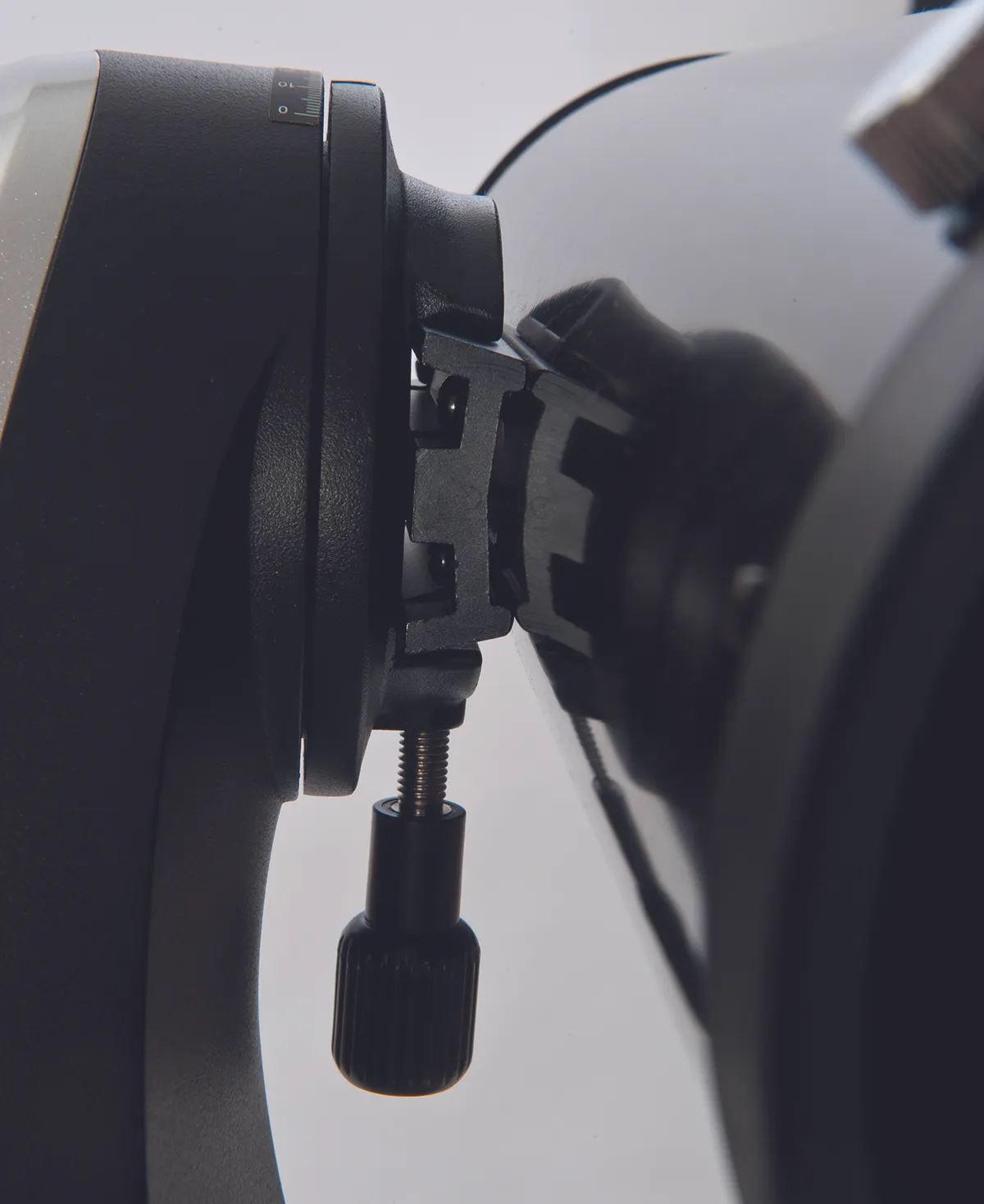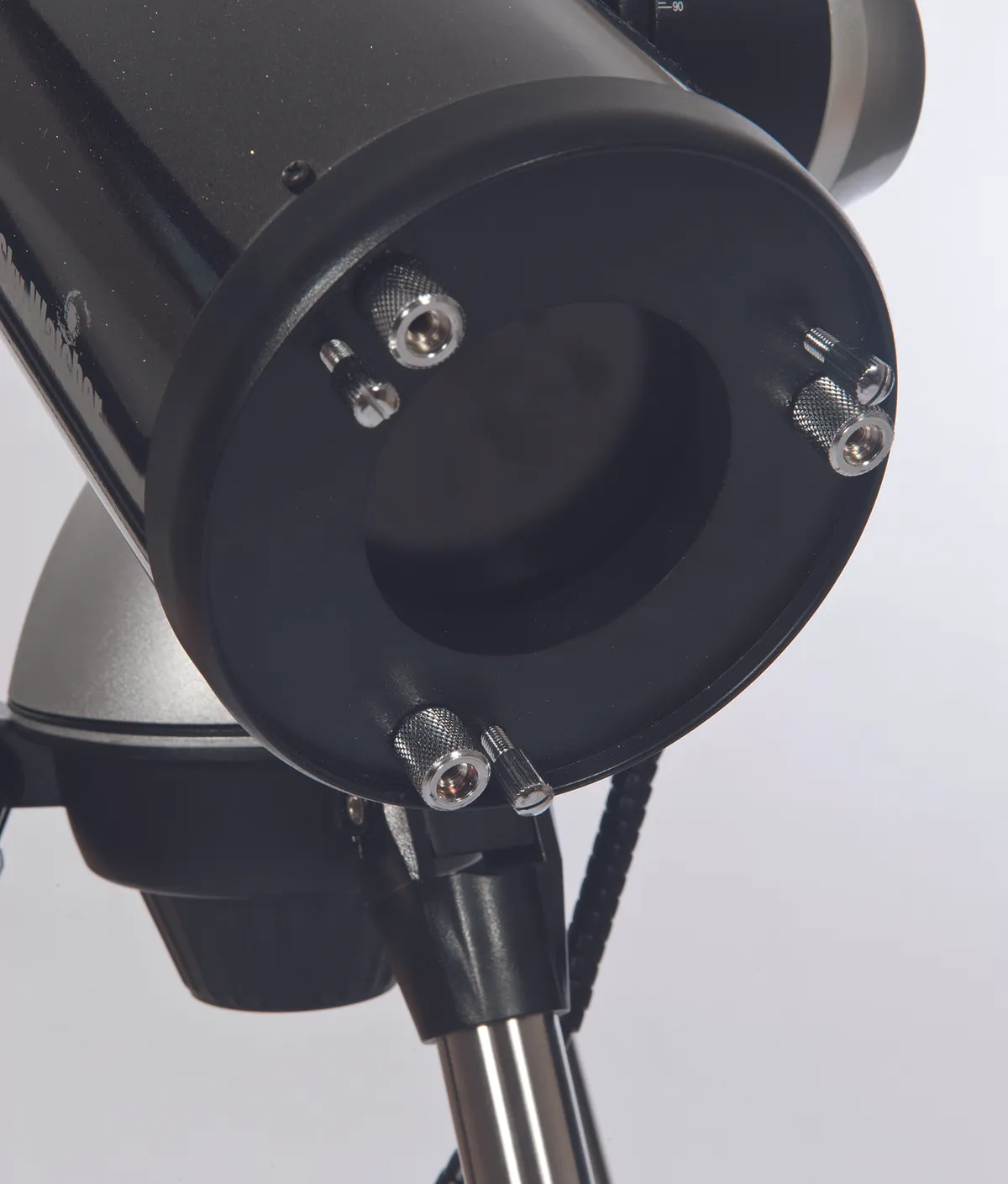The Newtonian reflector has always been a popular choice for people starting out in astronomy – it offers the most aperture for your money of any optical design. Once upon a time, many scopes in the beginner bracket were supplied with cheap-to-produce spherical mirrors, which didn’t give the best views as they introduced ‘spherical aberration’.
This means that they brought light reflected from anywhere other than the centre of the mirror to focus at a shorter distance than the light from the centre itself, resulting in slightly blurred views.
To correct this optical error, many starter Newtonians introduced a small relay lens, which also increased the effective focal length of the telescope and enabled extra magnification.
Sky-Watcher changed all this over a decade ago when it introduced the SkyHawk 1145P, a reflecting telescope equipped with a parabolic primary mirror at a competitive price.
The more complex figuring of its mirror produced much sharper images, since light reflected from most of the mirror’s surface is brought to focus at the same point.
The original SkyHawk 1145P was mounted on the diminutive EQ1 equatorial mount with slow-motion controls, although an optional right ascension motor drive was soon introduced.
This compact, portable system was an excellent introduction to astronomy, affording a reasonable 4.5-inch aperture and a practical 500mm focal length.
It made for a versatile and cost-effective first buy, and it is still available in this format.
But November 2008 saw the launch of the SynScan altaz Go-To mount to accompany several of the company’s most popular small telescopes, including the SkyHawk 1145P.
It was an instant success that remains popular to this day and is the combination we looked at in this test.
This telescope features in our lists of the best telescopes for beginners, the best telescopes for kids and the best budget telescopes

Black beauty
The attractive silver and black mount has a single-tine fork with a Vixen-compatible saddle clamp on its inner face.
Fork mounts can sometimes restrict the ability to view objects at the zenith, but the eyepiece position of a Newtonian reflector like the SkyHawk 1145P neatly resolves this.
The black and metallic flake finish of the tube matches the mount very well indeed, although the poor quality finderscope was a bit of a letdown.
The mount’s light weight makes transporting it fully assembled very easy and we found that levelling it using the built-in spirit level was the key to achieving Go-To accuracy.
After entering our location, date, time, time zone and daylight saving information, star alignment was simple and intuitive.
A magnetic compass is thoughtfully provided to help you locate one of the eight alignment zones (northern sky, northeastern sky and so on) for the ‘brightest star’ alignment method, which is ideal for beginners.
We were very pleasantly surprised at how accurately the Go-To functioned, with each object appearing near the centre of the 25mm eyepiece’s field of view.
Jupiter was badly placed from our observing site, so we concentrated on the last quarter Moon at first.
The craters Ptolemaeus, Alphonsus and Arzachel were crisp and we spent a long time exploring the terminator, enjoying excellent views under good seeing conditions.
Impressive results
Beginners can sometimes find the small and faint Ring Nebula in Lyra a little difficult to locate, but the accurate Go-To system brought it straight into view.
Splitting Zeta Lyrae was straightforward and we saw good star shapes across 75 per cent of the field of view.
Moving westwards we sought out the globular clusters M13 and M92 in Hercules, which were a delight – so much so that we went in search of another globular, M15 in Pegasus, and again we weren’t disappointed.
Moving eastwards again, the lovely contrasting colour double star Albireo was a fine sight, and we can honestly say that this was one of the most enjoyable observing sessions we’ve had for a long time.
The Sky-Watcher SkyHawk 1145P SynScan altaz Go-To certainly puts the fun into astronomy with its ‘grab and go’ credentials, quick setup, accurate Go-Tos and no-nonsense optics.
We would highly recommend this established telescope and mount to any beginner looking to get a head start.

Vixen-compatible saddle
The telescope is attached to the mount by a Vixen-style dovetail bar that provides a quick and stable coupling. This arrangement proves to be quite a bonus – it means that you can also install other small telescopes equipped with a Vixen dovetail bar on the mount, provided their combined weight doesn’t exceed about 4.5kg.
Altaz mount
Moving in two planes, vertical (altitude) and horizontal (azimuth), this is the simplest type of telescope mount. However, coupled to computer-controlled drive motors, this one is an excellent observing platform for a wide range of scopes, though would-be astrophotographers should note that it is only suitable for short-exposure shots of Solar System objects.
Hand controller
The well-established SynScan hand controller is the heart of the Go-To system that controls the movement of the mount. With a built-in database of over 42,900 objects there is no shortage of celestial objects to find, though you’ll need larger telescopes than this mount can carry to see all of them.
Collimation adjustment
One of the drawbacks to using a Newtonian reflector, especially for newcomers, is that the mirrors will need to be collimated (aligned with one another) fairly regularly. However, the generous, chunky adjustment knobs and short tube length of the SkyHawk 1145P make this a fairly simple task to carry out.
Tripod
The tripod is light but more than adequate for damping out unwanted vibrationsin the telescope. The extendable stainless steel legs made it easy to choose a comfortable viewing height for standing or seated observations and the built-in spirit level is very useful. It also has a quick-release leg spreader, which doubles as an accessory tray.
Vital stats
- Price £299
- Optics Parabolic Newtonian
- Aperture 114mm (4.5 inches)
- Focal length 500mm (f/5)
- Finderscope 6x24 finderscope
- Mount Computerised altaz HD Go-To
- Eyepieces 10mm and 25mm, both 1.25-inch fit
- Extras 2x Barlow lens, 1.25-inch fit
- Weight 6.3kg
- Supplier Optical Vision
- Tel 01359 244200
- www.opticalvision.co.uk
This review originally appeared in the November 2012 issue of BBC Sky at Night Magazine
